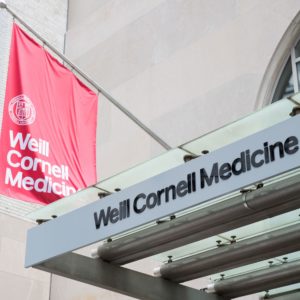The nation has a spiraling crisis in higher education underscored by an increasing cadence of worrisome reports on the growth in student debt paired with cynicism and frustration among Americans about whether the cost is worth it.
Student debt is now the fastest-growing segment of household debt, surging 157 percent since 2007. “In terms of American exceptionalism, student loan debt stands out. No other country imposes the kind of costs on college and university students that the U.S. does, and nowhere else do loans cover so much of those costs,” according to a recent Bloomberg report. “Experts think that the roughly $1.5 trillion in outstanding education debt in the U.S. is more than that of the rest of the world combined.”
Student debt has now surpassed all other types of household debt considered to be “severely derogatory,” or seriously delinquent, the Federal Reserve Bank of New York found.
So, it’s no wonder Americans are souring on the value of higher education, even a degree from a leading research institution. Recent polling by the Association of American Universities, which represents top research universities, captured worrisome attitudes among Americans. Only 1 in 10 adults believed that a degree from one of America’s leading research universities is worth the cost of tuition. Only one in three respondents (33 percent) said “a college degree is valuable and worth the cost.” A solid majority (57 percent) indicated that “a college degree is valuable, but not worth the cost.”
That sort of cost versus benefit calculus is squarely on the minds of people considering medical school, because attending medical school can dramatically increase a student’s debt load. And when twinned with opportunity costs for all the years that medical students are not earning, the total cost of attending medical school swells to over $800,000.
To address this issue, a growing trend in academic medicine is emerging, especially in New York where the cost of living is high, to ensure that future physicians are not saddled with crippling education debt.
Beginning this academic year, Weill Cornell Medicine will offer debt-free, financial aid for all medical students who qualify for financial aid. At a national average annual cost of more than $80,000 and a national average student debt upon graduation of nearly $180,000, the effort is a huge benefit to the nation’s next generation of medical professionals – and also to patients. With students no longer concerned with crushing debt, medical school is likely to attract those additional bright minds who might otherwise go into other fields of study. An expanded pool of students free to pursue disciplines in which they especially excel can only benefit quality of care for patients.
Our own debt-free program was made possible by the generosity of a myriad of benefactors including The Starr Foundation, led by Maurice R. Greenberg, Joan and Sanford I. Weill and the Weill Family Foundation, Christine Seix and Robert S. Dow and many others, whose giving has sustained our scholarship endowment for the last three decades.
Still, many medical schools are not as fortunate to have such largesse allowing students to gain such a vital education without gaining debt. Unfortunately, the breadth of the national problem is far greater than the supply of generous donors.
The stream of reports about student debt, coupled with various policy proposals offered by presidential hopefuls, has put this important issue back on the map — and hopefully for good. It will require years to solve and an honest discussion about cost versus value, but in the meantime the nation must nurture the next generation of physicians. And when they graduate from Weill Cornell Medicine, the only debt they will owe will be to the patients they will serve.

